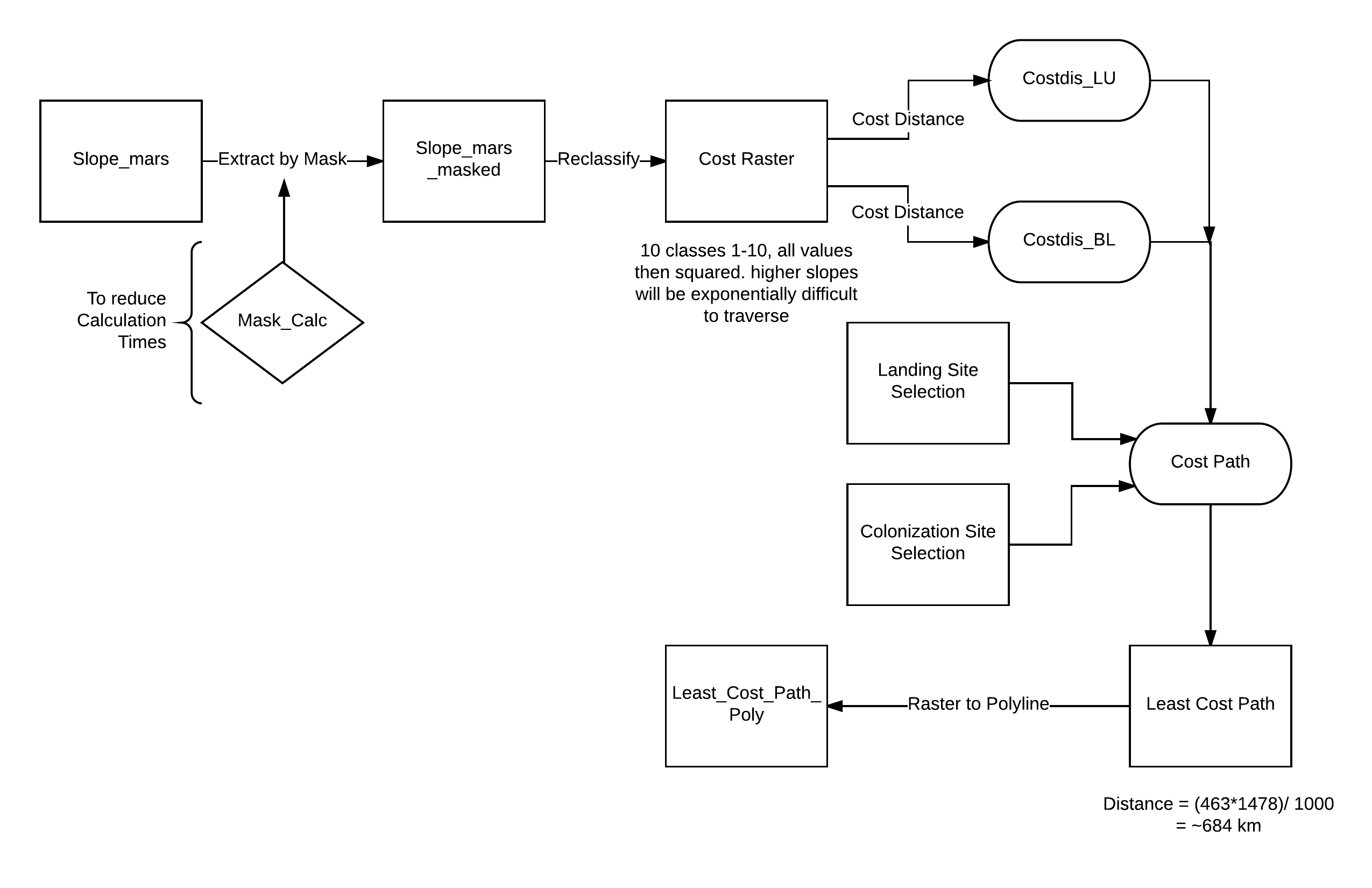*Many of the assumptions used in the methodology were based on the technical specifications presented by SpaceX at a conference in August 2016.
The following information was taken into account when choosing factors to consider for landing sites. The diameter of the booster, (fig. 1) where the actual ship that will land on the planet will have a diameter of 17 meters with extendable legs that go past the body (fig 3.). Assumptions were made that this would require an absolute minimum landing area with a diameter of 25m across to accommodate the size of the landing gear. Due to thrust and dust that will be produced as well as acoustic reverberation that can cause damage to the ship, the landing zone would need to be substantially wider.
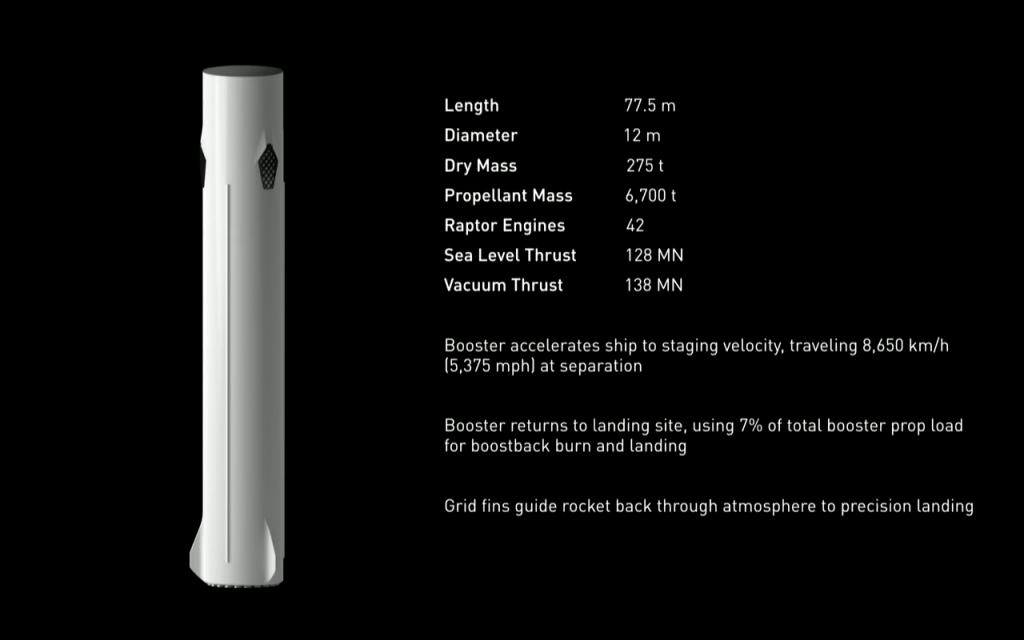
Figure 1.
Musk.E (2016). Mars_Presentation
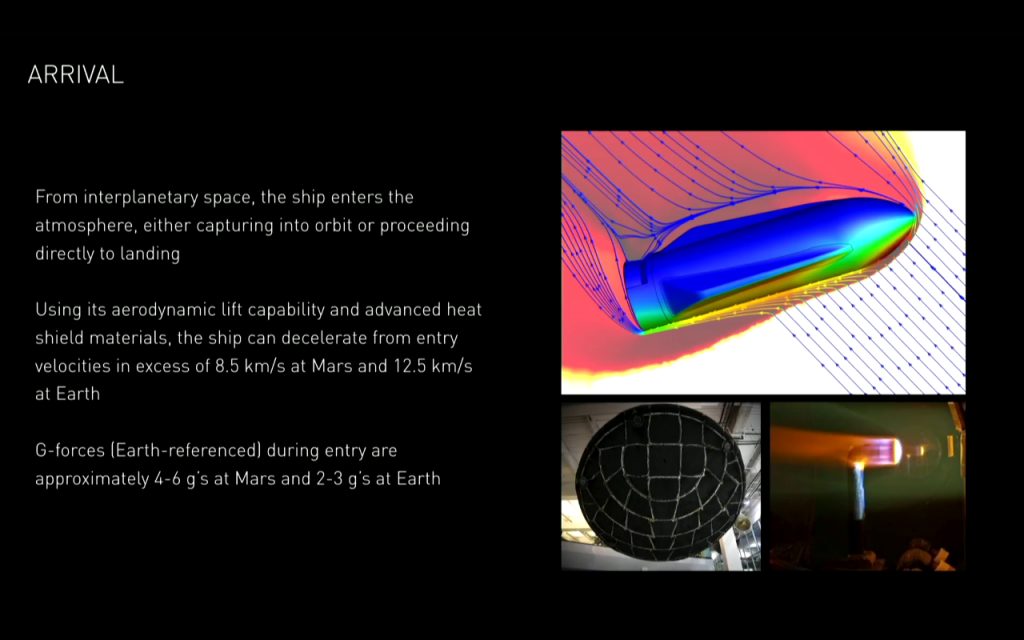
Figure 2.
Musk.E (2016). Mars_Presentation
Figure 2. displays the aerobraking process that will need to happen to bring the ITS into a stable orbit around mars. This will slow down the ship transfer velocity to a capture velocity where the ship can then turn retrograde (engines pointing in the direction of travel) and fire its thrusters to bring it down to the surface. Due to Mars’ thin atmosphere, the angle of entry into the atmosphere will need to be quite shallow to allow enough travel time through the atmosphere to slow down the ship sufficiently. This is why very low angles were chosen for landing sites as the ship will need to avoid peaks surrounding the landing site during entry. The ship will be mainly bottom heavy so it can accommodate slight slopes.Dust depth and variability analysis would be useful. Unfortunately, I was not able to find a way to make the data scale with the rest of my data sets and was required to be left out of the MCE. Dust data would be useful in the MCE because dust kicked up during landing could be harmful to thruster hardware on the ITS. It would also be useful for designing transport paths as harder soils are more easily traversed.
Dust depth and variability analysis would be useful. Unfortunately, I was not able to find a way to make the data scale with the rest of my data sets and was required to be left out of the MCE. Dust data would be useful in the MCE because dust kicked up during landing could be harmful to thruster hardware on the ITS. It would also be useful for designing transport paths as harder soils are more easily traversed.
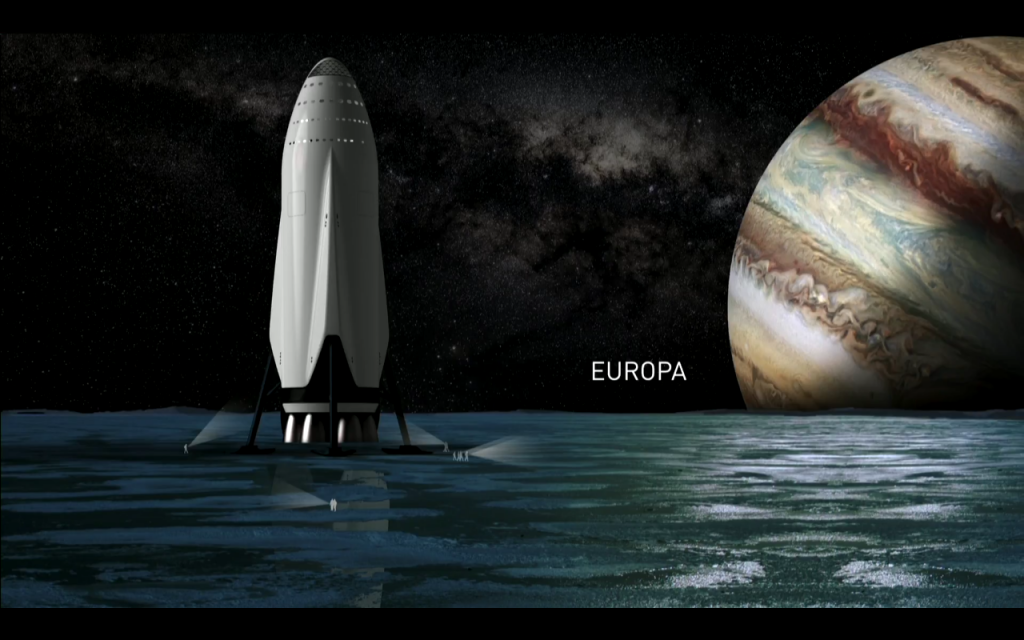
Figure 3.
Musk.E (2016). Mars_Presentation
In Situ Resource Utilization (ISRU) will be necessary for colonization of mars. Utilization of subterranean ice will be required to produce fuel (oxygen and methane) (Fig 4). As well as providing colonists a source of liquid water. This was factored into the analysis by way of MCE analysis with subterranean ice abundance.
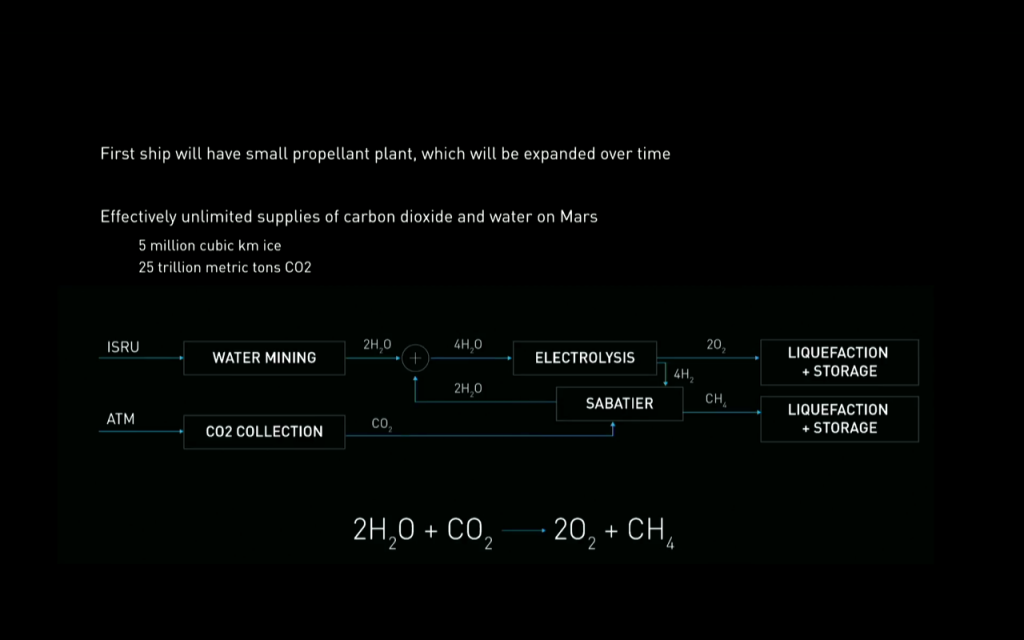
Figure 4.
Musk.E (2016). Mars_Presentation
The following flowcharts outline the process in which analysis was done on a subsection of mars (due to the limitations of my hardware and software). The process includes all assumptions stated above in the analysis.
Site Selection Process:
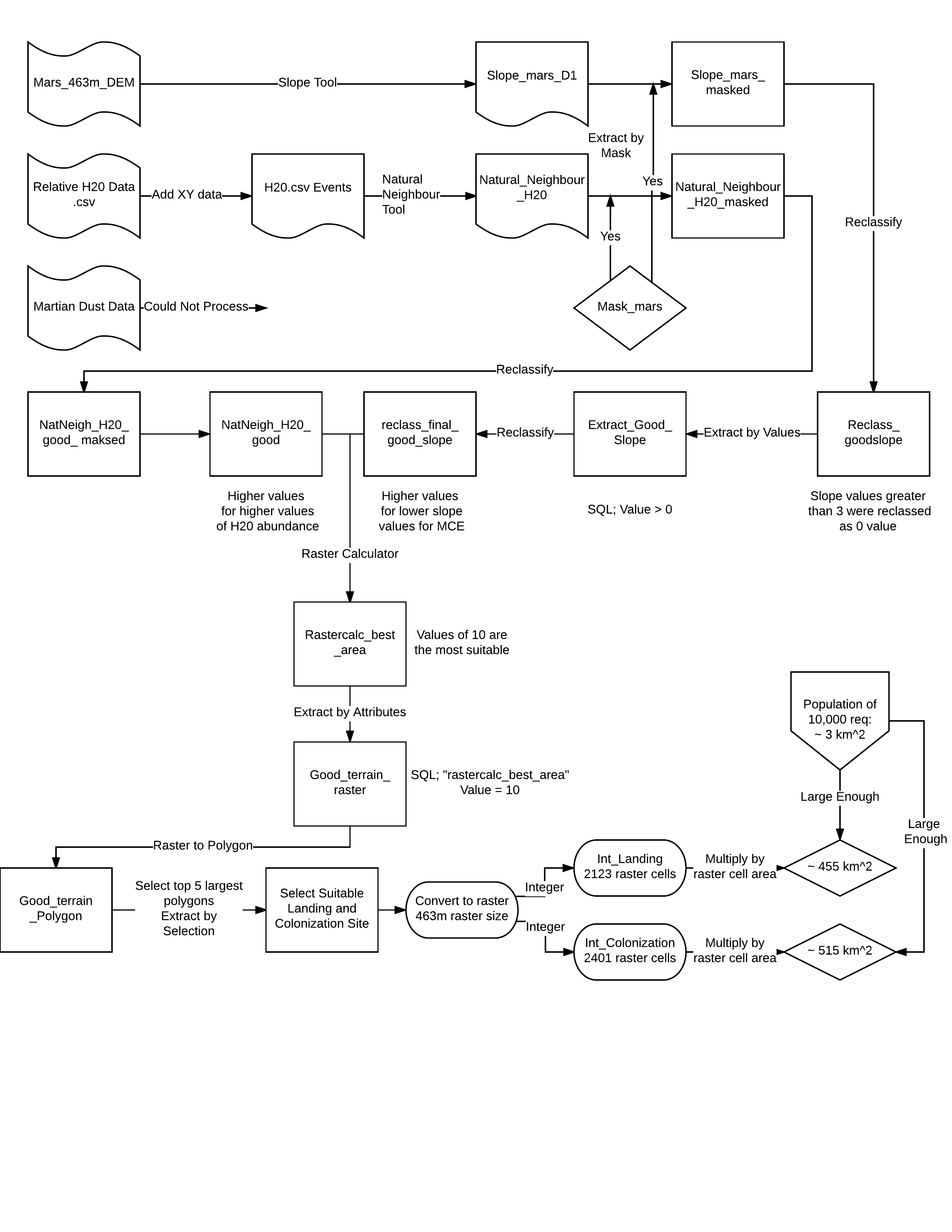
If necessary that landing site and colonization site be separate (due to dangers associated with launch) a least-cost path will be calculated for efficient travel between sites. The following flow chart outlines the process involved with doing the analysis on a least-cost pathway.
Least Cost Path Process:
